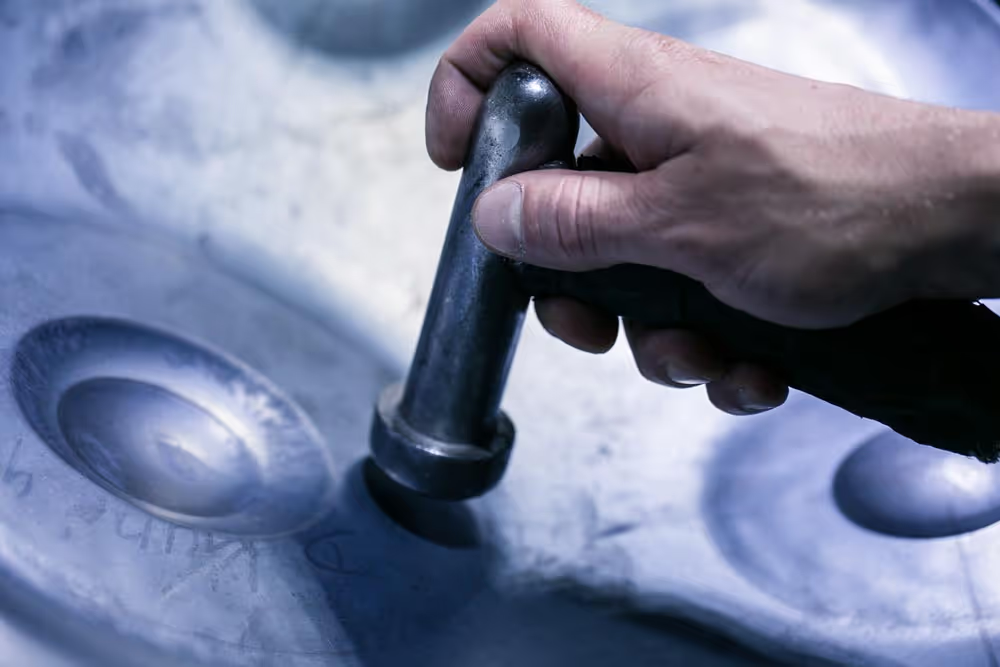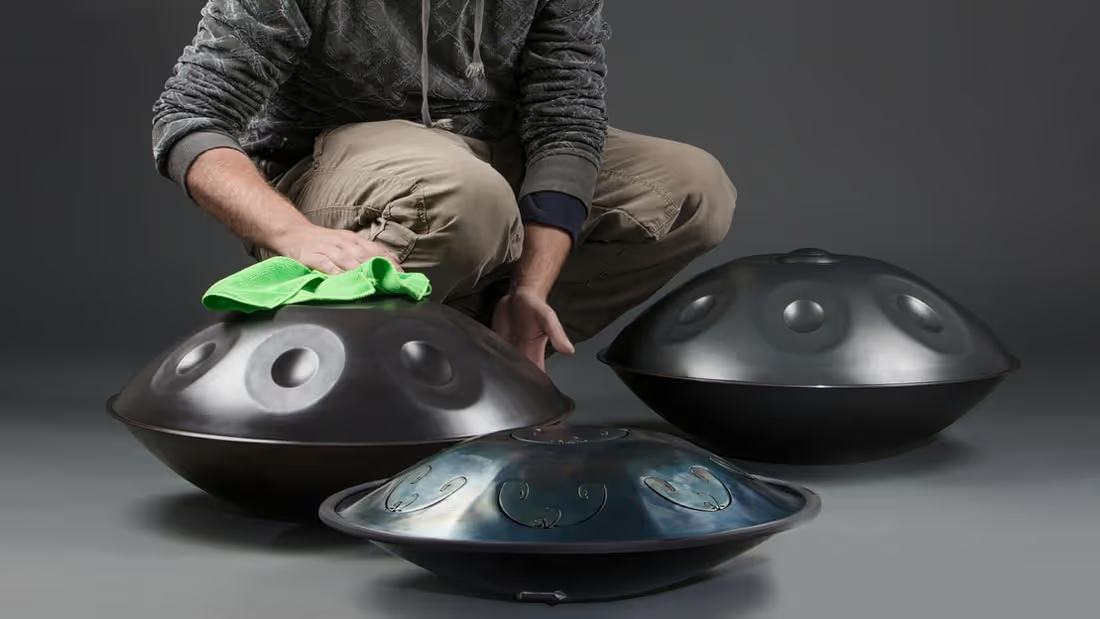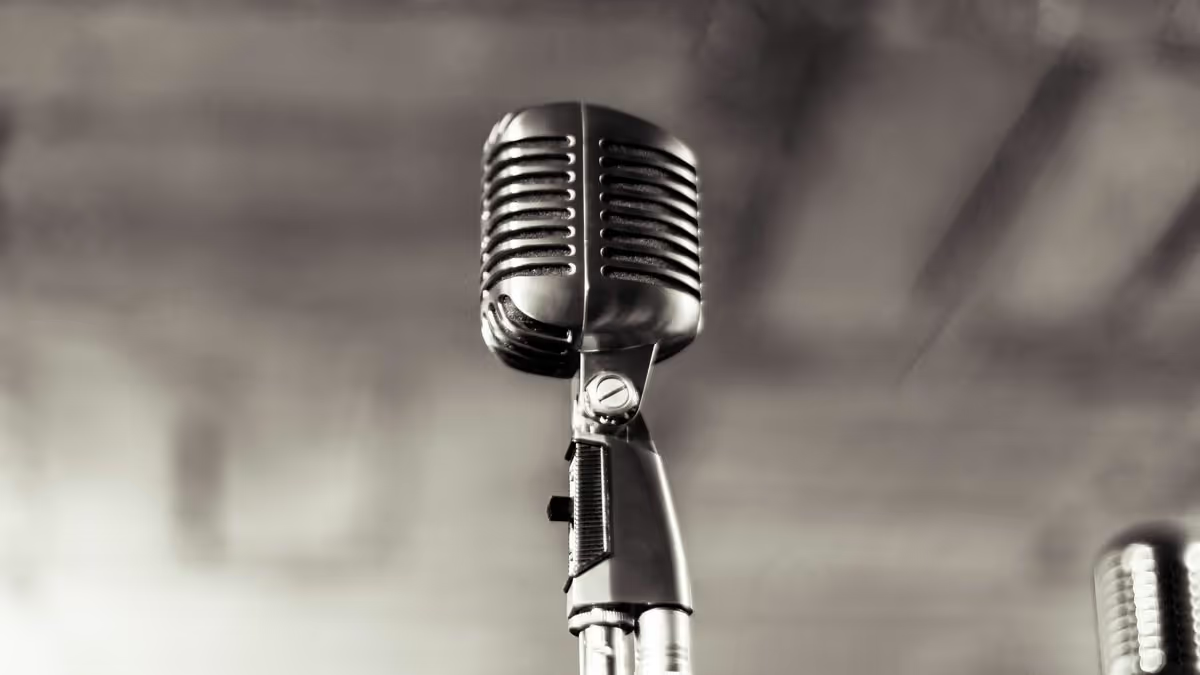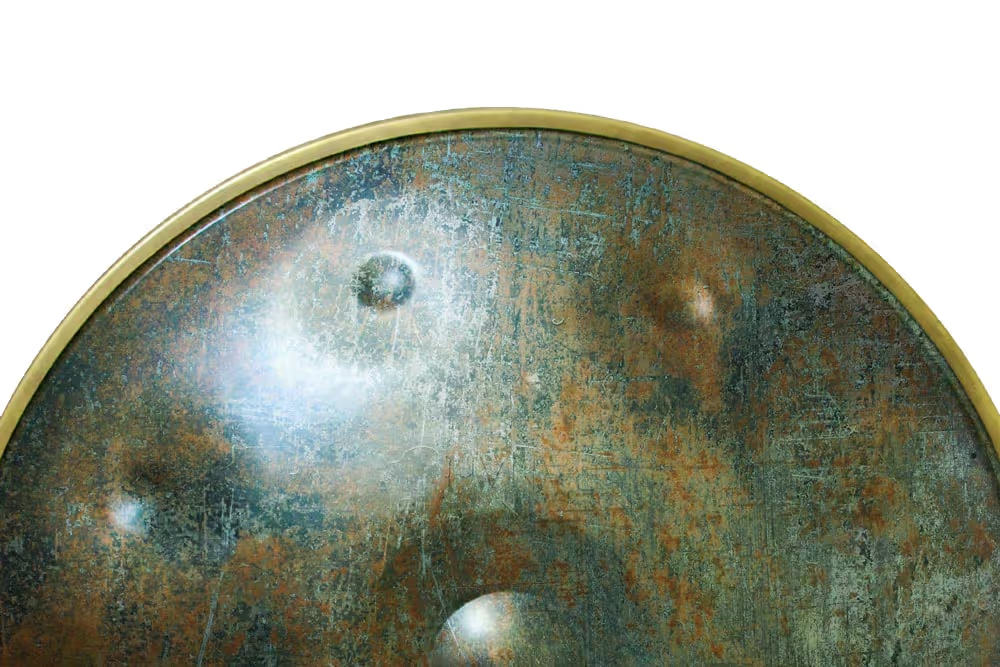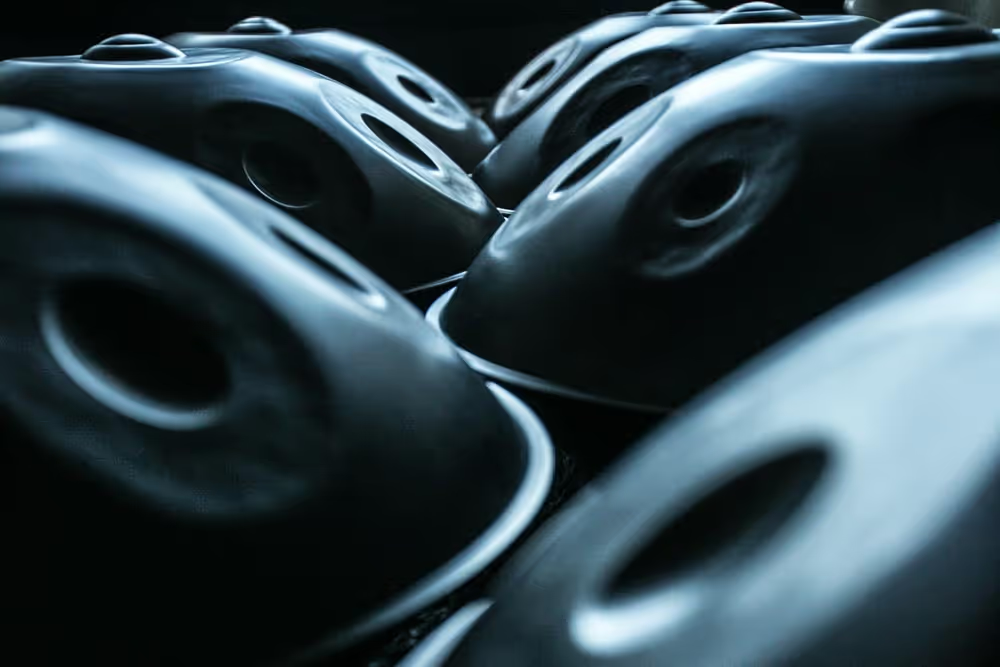You have just met, around a street corner, a musician who played a magical instrument. It was as if his hands were dancing on the instrument! It’s a handpan! You are won over, captivated, and now you’ve decided that you must buy one!
You go back home, your head still full of beautiful melodies and captivating sound. Let’s go! You start looking for this unique instrument that finally seems to “match” you and “fits” your need to create music. You have no musical background, or very little, and you discover on the internet that the handpan is not a chromatic instrument (such as a piano, where each successive note is a half-step above the previous). Indeed, its notes consist of a single scale, a series of notes in steps. You may feel a bit lost and do not know how to choose the scale of your future instrument. There are hundreds of scales, and each one has its own unique sound and flavor!
In a previous article, we learned everything you need to know to buy a handpan. Today, I would like to answer a specific question: How can I choose the scale of my first handpan?
1. Start by exercising your ear
I encourage you to listen to many different scales on the internet to determine which ones you like the most. Note down the scales that speak to you, delight you, charm you, carry you, those with which you “connect”. What is important is to record their name, if it is provided, but also, and especially, the notes that compose them. Be careful: this information is often hidden a little bit, so you must go hunting for it. Look in the description of the video, in the title, in a commentary, in the initial post, at the very beginning of the video, or at the very end. Do not hesitate to ask the community on facebook “handpan instruments” if you like a scale whose notes are not mentioned.
Here are several demo videos of different scales. Enjoy listening to them!
– by David Kuckhermann
– by Shellopan
– by Adrian Portia
This link also contains a very wide variety of scales, sorted alphabetically, with their names, variations, notes, and often several demo videos.
2. Determine what you would like to feel
Each scale has its own color and sound. Depending on the scale, you will feel different emotions. Note, however, that the same scale will evoke different emotions depending on how it is played, and who is listening. All this remains very subjective, but here are some examples that I hope will help you:
- Do you like cheerful, playful scales?
- Do you like sad, melancholic scales?
- You love those which make you travel and disorient you?
- Do you like those which are mesmerizing?
- Do you like the slightly mystical scales?
- Do you like those which express hope?
- Do you like mysterious scales?
I’ve said this before, but it is important to reiterate, everything is subjective. Depending on how a scale is played, and the emotion of the player at the time, each instrument can evoke a wide variety of feelings. For example, this scale gives me hope, but it also makes me sad or even melancholic … and sometimes makes me think about Christmas.
Although all scales are made for all styles, some are traditionally associated with a particular style of music. If you are a fan of a certain musical genre, try to select the scales that best fit what you like. Maybe the bluesy ranges? jazzy? Celtic? Hispanizing? Asian? Eastern?
Here are 3 examples:
Take stock of what you love. Search, stroll, listen, and take notes.
Do not try to find the scale of your dreams right away, or you might get lost. It is quite possible that you will like several, at first, and that you have a hard time making a choice.
Simply note down all those you love, and the feelings you associated with them. Try to write down the ones you like a little, or more, those that challenge you, touch you, etc., even if you are not sure of yourself. Leave them aside for a while. Then, a little later, come back and listen to them, one by one. Little by little, your taste and your ears will select more and more precisely the scales that really appeal to you, and that is how you will end up making your decision on your favorite scale, without any regret.
Here is a tip: Make an initial list of instruments and select a number of scales that “speak” to you. Then, look for other videos of these scales (by typing “handpan [name of the scale]”, for example “handpan Amara”) This will allow you to listen to other ways of playing these scales. Played a certain way, the scale may please you on one video and not at all on another. So take the time to discover all the facets of the same scale through different ways of playing, different players, and different manufacturers.
Finally, if you have the opportunity, also visit various manufacturers and ask if you can try their scales: nothing replaces a trial and listening in person, by yourself. At the end, it is you who will play the instrument, with your feeling, your emotions, your approach of the instrument, your touch, and so on.
3. Select the number of notes you want
Before going any further, you need to know one essential thing: There are two ways to count the notes of a handpan. Some include the ding (the central note) and others not. We will thus speak either of 8 notes or 7 + 1 (“+ 1” representing the ding). It will be necessary to be clear with the manufacturer during your discussions. Personally, I use the notation “X + 1”, where “X” is the number of circular notes: according to this notation, we will speak of handpans 7 + 1, 8 + 1 or 9 + 1 notes.
What we need to know now is that, in general, the more notes we have on a handpan, the more we increase the possibility that it has flaws. Indeed, the more notes there are, the more risks exist:
- that the tuning is not perfect
- that the sharpest notes do not have much sound volume
- that the notes do not all have the same timber
- that there is interference between the notes
Of course, the more notes there are, the more parameters and variables to master and maintain.
If you want to focus on sound quality and overall balance of your handpan by choosing fewer notes, you should also be aware of the disadvantages. The fewer notes there are, the fewer the possibilities on the harmonic level. You will be more limited for composition, for example. You will have the feeling of always doing more or less the same things and going round in circles, so you may get bored with the scale more quickly.
Weigh the pros and cons, and find the potential / quality ratio that suits you.
My personal opinion: For a first purchase, I advise you to choose an instrument with a minimum of 8 circular notes (not counting the ding), and not more than 9. It is on these instruments that I could see the best potential / quality ratio. You will find, of course, that there are seven-note (+1) instruments that sound beautiful, but, frankly, you will soon want something else. That said, the very good manufacturers offer instruments on which you will not see the differences, 8 + 1 or 10 + 1 are the same, good quality instruments!
4. Still some more information to finish …
440hz and 432hz
Many people will love instruments tuned, not in 440 Hz, but in 432 Hz. Without going into the debate 440 vs 432, I would just like to point out that if you acquire an instrument in 432, you will not be able to “jam” with an instrument in 440. You may therefore feel “alone” and frustrated not being able to share musical moments with other players. Given that about 98% of them play in 440, be aware of it before your future purchase.
The attraction of the “Eastern”
Many people, and perhaps it is true of you, are attracted by the “Eastern” scales such as Hijaz and Romanian, typically the Middle East, or Ragadesh and Saladin like India, or AkeBono and Shang Diao , with more Asian colors. It is true that they will feel exotic and other-worldly, and they will certainly accentuate the “zen”, “relaxation”, and “meditation” naturally present in the sound of the handpan. They are therefore charming and mesmerizing … but can very quickly become limiting and prevent you from exploring variation. . Let me take the example of the Ragadesh scale as it is a very expressive scale, with a lot of character. You will feel that, whatever you’re playing, you’re taking over the soundtrack of Slumdog Millionaire or a snake will get out of your wicker basket. We must be aware of this: “Eastern” scales are scales that can, in the long run, limit the color of what you play.
The most common scales for a first instrument are:AmaRa (minor), Kurd (minor), Magic Voyage (minor), AnnaZiska (minor), Equinox (minor) and Pygmy (minor).
The lowest center note (the ding) commonly found on these scales are:
- AmaRa: C # or D
- Kurd: D
- Magic Travel: F
- AnnaZiska: C # or D
- Equinox: E
- Pygmy: F
Why are they more common than others? Generally, because these scales are simpler to “tame” and play. Grossly said, an inexperienced player is more quickly able to “get beautiful things out of it”, which reinforces even more the intuitive side of the instrument. These are, therefore, frequently chosen scales for a first instrument. They are neither too high nor too low, and so pleasing. Being very popular, they will allow you to play with more people. So keep this information in mind for your future purchase.
Minor vs Major
Minor scales are also among the most sold. I believe that this instrument lends itself more to what is melancholic, hypnotizing, introspective, and meditative, and you will find that it is the minor mode which will best promote these moods and feelings.
To conclude
How to choose your scale? Well, by using your ears and your tastes, according to who you are, what touches you, and what brings you delight. Even before watching your first videos, you already know a little bit about what you like. You know the sounds that make you vibrate. But by listening to several scales, you will still discover new sensations, new feelings, and new moods. It’s beautiful and it’s called music!
So, dear friends, I hope this article will help you make your decision. I hope you take the time to really find the scales that “match” you and that will make you vibrate.
Do you have another tip to find a scale? Would you like to share your experience with us? Write it down in the comments!
Photos credits: Ayasa Handpan
Cover Picture : Hannah Rajah



